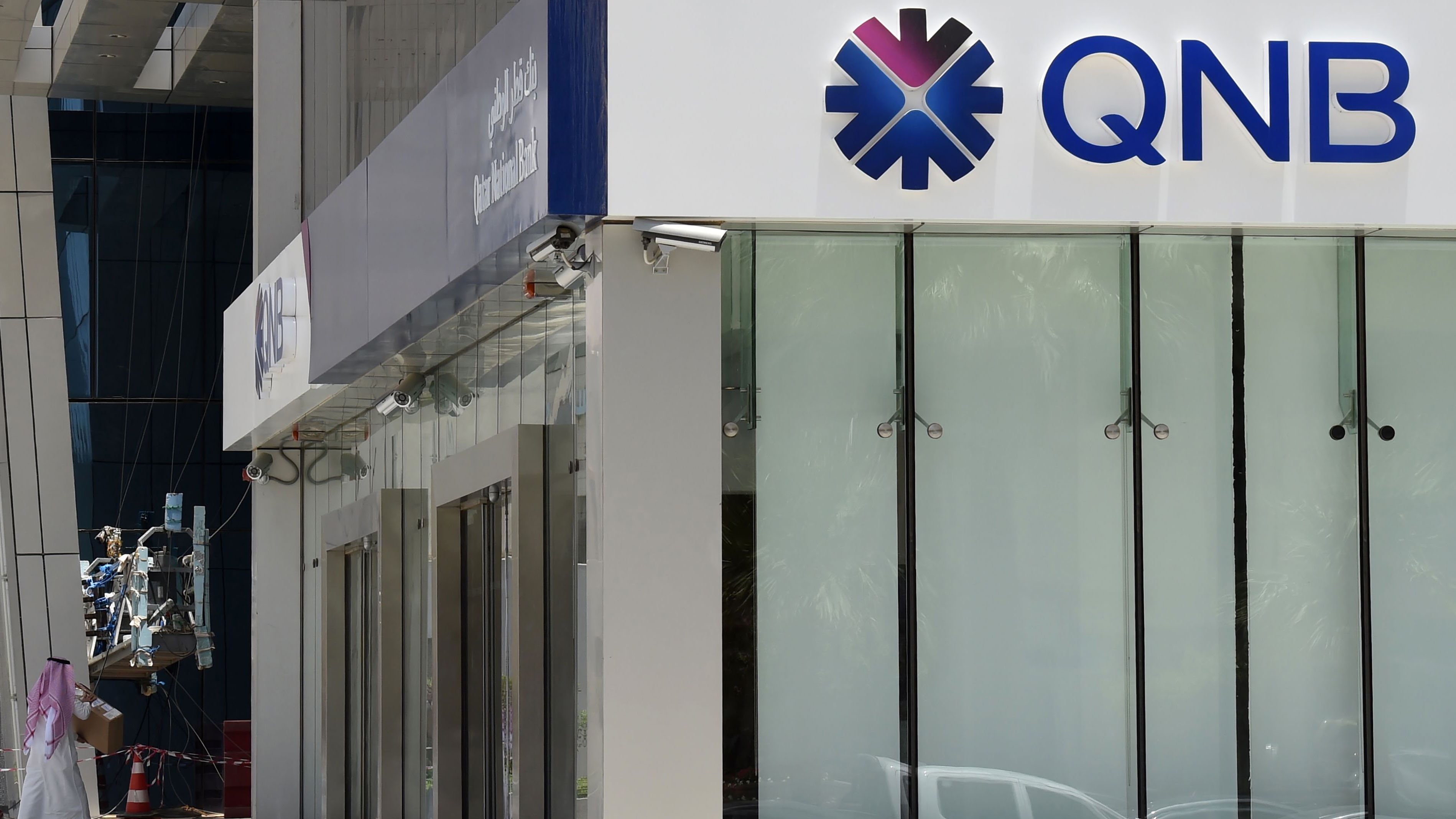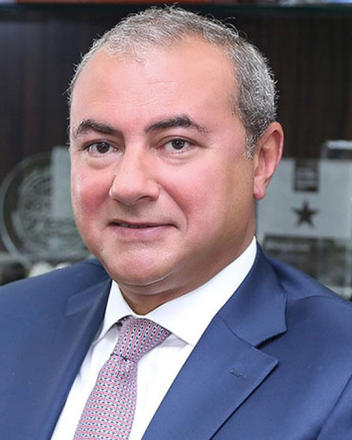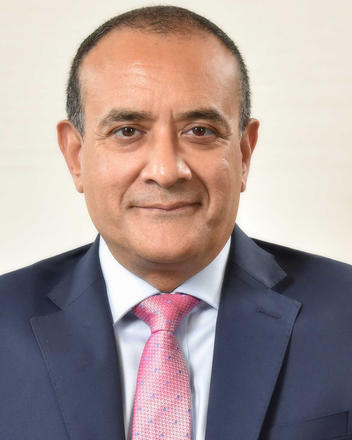Qatar’s banking sector stands strong in face of pandemic

Qatar was well positioned for difficult economic conditions when Covid-19 hit, helping the country’s banking sector remain healthy throughout.
Qatar’s banking sector has thus far largely weathered the storm of the global coronavirus pandemic, with lenders allocating higher credit loss provisions in case non-performing loans (NPLs) rise significantly.
The government unveiled a QR75bn ($20.6bn) stimulus package in March 2020, equivalent to around 12% of nominal gross domestic product, as part of efforts to shield the economy from the global pandemic. A moratorium of loan repayments was also introduced, which was subsequently extended until September of this year.
“The pandemic’s effect on the Qatari banking sector was essentially in the form of a decline in return on assets and return on equity, yet the fundamentals of Qatar’s banking sector remain healthy, reflecting high asset quality, ample liquidity and strong capitalisation,” says Bassel Gamal, group chief executive of Qatar Islamic Bank (QIB), the country’s largest Islamic bank by total assets.
The average return on assets for Qatari lenders declined from 1.6% in 2019 to 1.4% in 2020, according to Qatar Central Bank data, while the average return on equity decreased from 15.8% to 13.7% over the same period.
Qatari commercial banks saw their assets grow by 8.6% in 2020, according to the central bank, with a 10.7% increase in domestic assets more than compensating for a 3.8% drop in foreign assets. This year has begun positively, with assets growing by a further 2.9%, with lending and deposits both up 4.4%.
Blockade ended
The first quarter of the year also saw Saudi Arabia, the United Arab Emirates, Bahrain and Egypt lift their political and economic blockade of Qatar, put in place in June 2017. The boycott had resulted in tens of billions of dollars in deposits exiting the banking system, but had also forced parts of the economy to realign, growing new markets and improving self-sustainability.
“Sometimes going through challenges makes you stronger,” says Joseph Abraham, group chief executive of Commercial Bank of Qatar (CBQ).
Mr Abraham notes that as a result of the boycott, sectors such as hospitality, travel, tourism and commercial real estate had already learned to cope with challenges ahead of the onset of coronavirus, and that the banking sector had already done a degree of adjustment to the challenges in these sectors. “They also looked at their capital and costs, so they were in an enhanced state of readiness for the pandemic, compared to other countries in the region,” he says.
The pandemic’s effect on the Qatari banking sector was essentially in the form of a decline in return on assets and return on equity
As such, and aided by the support measures taken by the government, the Qatari banking sector saw its profits drop by an average 12.3% in 2020, says Mr Abraham, compared to an average of around 30% across the region. “[Profits fell by] about 40% in the UAE and 22% in Saudi Arabia. Qatar was proportionately less affected,” he says.
Meanwhile, Qatar’s eight listed banks saw total operating income rise by 4% in 2020, boosted by higher net interest income of 9%, according to ratings agency Moody’s.
Subdued growth
In its Global Retail Banking 2021 report, Boston Consulting Group (BCG) predicted that revenue growth for retail banks operating in the Gulf region would be subdued until at least 2024, even in the most optimistic scenario. While banks in the Gulf Co-operation Council (GCC) have achieved a compound annual growth rate (CAGR) of 5.5% over the past five years, they can expect to achieve a CAGR of 1.6% until 2025 at best, according to BCG.
Part of this is a result of higher credit loss provisions and banks taking a more cautious approach.
In a research note in March, S&P Ratings wrote that the GCC banking sector would remain constrained after setting aside $10.9bn in credit loss provisions to deal with the potential fallout of the global pandemic, despite the recent rally in oil prices and a positive near-term outlook. Even so, Qatari lenders, alongside their peers in Saudi Arabia, are likely to be less adversely impacted than the other Gulf states, according to S&P Ratings.
Loan-loss provisions for Qatari banks were at record highs of $2.9bn in 2020, compared to $1.6bn in 2019, according to Junaid Ansari, senior vice president of investment strategy and research at Kuwait-based Kamco Invest.
Even so, when compared to the rest of the GCC market, the banking sector performed better on almost all metrics, he says.
Despite higher provisioning levels, those operating in the sector do not see them as having a constraining impact on lending. “The credit loss provisions per se won’t impact the capacity of the banks to lend, because they have a very strong capital adequacy ratio — the average for the banking sector is about 18.5%,” says Mr Abraham.
He adds that the impact will only be known fully once the National Support Programme has been discontinued in September. “The banking system has enough buffers and will continue to be cautious, but it’s not constraining loan growth,” he notes. “Asset growth in the first quarter is about 3% quarter-on-quarter for the banking system, which is quite strong and shows it’s not really constrained.”
Credit growth
According to Kamco Invest, Qatar recorded the second-strongest growth in credit extension within the GCC in 2020, behind only Saudi Arabia, with credit facilities up 8.6% to QR1.13tn, and with lending to the public sector, general trade, contractors and the services sector reporting double-digit growth.
Among the 62 listed banks in the region, Qatari banks also reported the biggest quarter-on-quarter increase in net loans during the fourth quarter of 2020, up 2.5%, compared to a regional average of 1.4%. Governmental lending and the real estate sector were the major contributors to loan growth, with credit to the public sector jumping 11% year-on-year versus 8% to the private sector.
The sector’s NPL ratio, meanwhile, increased slightly to 2% in 2020, from 1.8% in 2019, while the coverage ratio increased from 82% to 84%. The aggregate loan-to-deposit ratio for Qatari listed banks was also 91.1% in the fourth quarter of 2020, according to Kamco Invest, compared to a region average of 80.1%.
Impact of blockade end
The Saudi-led blockade — put in place in June 2017 following allegations from Riyadh of Qatari-state support for terrorism — resulted in $30bn of non-resident deposits exiting the country’s banking system, with Qatari state agencies pumping in around $40bn to compensate. Following the lifting of the blockade in January 2021, some are predicting a return of some of those assets.
In January, Fitch Ratings wrote that it expects Saudi clients who withdrew deposits from Qatari banks due to the blockade to start shifting some of their funds back. It added that the return of GCC deposits would provide Qatari banks with an additional pool of liquidity, effectively diversifying their funding base, reducing the reliance on price-sensitive government-related entity and corporate deposits, and reduced funding costs.
Even without such funds, non-domestic deposits accounted for 25% of total Qatari bank deposits in September 2020, in line with pre-blockade levels. This high dependence on non-domestic funding was one of the contributing factors for Qatari banks having a weighted average cost of funding about 200 basis points (bps) higher than Saudi banks, and a weighted average net interest margin about 100bps lower.
Mohamed Damak, senior director of financial services at S&P Global Ratings, believes that Qatari banks have likely learned the lesson from the blockade that too much concentration could result in stress if there is a shift in the environment. “We think that there will be some deposits that will come back to the Qatari banking system, but we don’t think that the concentration would be the same as what it used to be before the boycott,” he says. “We think that the banks will probably refuse some of the deposits if they start to see that concentration risk.”
At the same time, Qatari banks have been hitting the bond market, potentially as a way of diversifying their investor base. Both Qatar National Bank (QNB), the region’s largest lender, and CBQ issued bonds in April 2021, worth the equivalent of $167.97m and $161.6m, respectively, with QNB raising in Chinese yuan and CBQ in Swiss francs.
The ability of Qatari banks to raise significant funding over the past few years also highlights the impact of the blockade. “The resilience demonstrated by Qatar and Qatari banks [during the blockade], I believe gave a degree of confidence to international investors. Qatar’s resilience and the willingness of the government to provide necessary support when needed was a very effective strategy,” says CBQ’s Mr Abraham.
Meanwhile, the pandemic has created a moment where banks around the world are reassessing their operations. At an operational level, QIB’s Mr Gamal says the pandemic has urged the sector to speed up its digital and alternate channels development and upgrade. “QIB was in a position to take advantage of its digital initiative that started almost five years ago,” he says.
The credit loss provisions per se won’t impact the capacity of the banks to lend
Overall, the banking sector has also embarked on efficiencies in terms of improved cost structures, as seen in the sector’s cost-to-income ratio dropping from 24.4% in 2019 to 21.2% in 2020.
In early May, finance minister Ali Sherif Al-Emadi was arrested over embezzlement allegations and stripped of his duties. Mr Al-Emadi, who was also chairman of the board at QNB and sat on the board of the country’s sovereign wealth fund, the Qatar Investment Authority (QIA), had been minister since 2013.
The Financial Times reported that the charges related to bribery and commissions related to government contracts. Qatari foreign minister and QIA chairman, Sheikh Mohammed bin Abdulrahman Al-Thani, said the investigation was related to Mr Al-Emadi’s capacity as finance minister, and not to his posts at either the sovereign fund or QNB, according to Reuters.
Fewer, larger institutions
Some are predicting an increased appetite for consolidation in the Qatari banking sector in the coming period, triggered by pressure on banks’ profitability linked to the global pandemic. This could also be aided by common ownership in many of the domestic banks, in the form of the Qatari government.
In 2019, Barwa Bank completed its merger with International Bank of Qatar to form a bank with total assets valued at more than QR80bn. Last year, the bank announced that it was changing its name to Dukhan Bank, taking its name from the site of the first substantial oil reserve discovered in the country back in the 1930s.
Meanwhile, Masraf Al Rayan and Al Khaliji Commercial Bank have announced their own merger, which is expected to be completed later this year. The combined bank would potentially create Qatar’s largest Islamic bank by total assets.
One benefit for consolidated banks is cost synergies. It is estimated that Dukhan Bank’s cost-to-income ratio fell from 38% in 2018 to 32% in the first half of 2020, while the Masraf Al Rayan and Al Khaliji deal should result in a cost-to-income ratio of about 20%, according to Fitch Ratings.
“The mergers will help, in the sense that they will create fewer and larger institutions that could eventually create some higher firepower to boost growth, or to have a bigger capacity to extend financing to the economy,” says S&P’s Mr Damak.
Islamic finance
One area that continues to grow at pace is the Islamic banking sector, which has seen its assets grow from QR305bn in 2015 to more than QR450bn in 2020. The sector accounted for 26.6% of total Qatari banking assets as of December 2020.
“The Islamic finance sector in Qatar has managed to perform well in recent years, and the long-term growth prospects for Islamic finance in Qatar remain promising,” says Mr Gamal, who adds that favourable local conditions and actions by the Qatar Central Bank continue to provide a strong growth platform for Islamic finance in Qatar.
Sharia-compliant lenders also benefit from the fact that when a government project is awarded in Qatar, there is usually a conventional and an Islamic tranche of funding. “The economy in Qatar is all around what the government is doing — the different projects, investment, etc — so that’s creating a source of growth for the Islamic finance sector,” says Mr Damak.
Qatar is also pushing for a strong role in the development of the global Islamic fintech industry, with the central bank’s National Fintech Strategy, launched in 2020, laying the foundations for creating a domestic fintech ecosystem with a strong focus on sharia-compliant offerings.
According to the Global Islamic Fintech Report 2021, Qatar’s Islamic fintech market is forecasted to grow by a CAGR of 19.6% over the next few years, and is expected to hit $2.1bn by 2025 — up from its current value of $849m. Meanwhile, the global Islamic fintech market, which is currently worth around $49bn, could rise to $128bn over the same time period.
The launch of the Qatar Fintech Hub in late 2020, founded by the central bank, Qatar Development Bank and Qatar Financial Centre, is a further sign of the role Qatar hopes to play. In February, it was also announced that Qatar will soon launch a new fintech venture capital fund initiative to stimulate the development of the country’s fintech ecosystem.
Looking ahead, while the pandemic continues to cast a shadow over most developments, Qatar’s banking sector finds itself in a strong position to expand and grow as the world begins to return to some semblance of normalcy.




